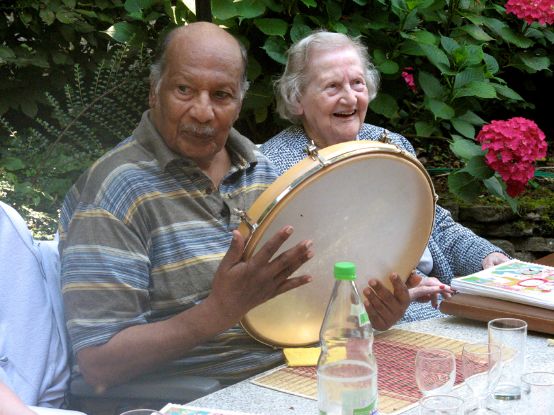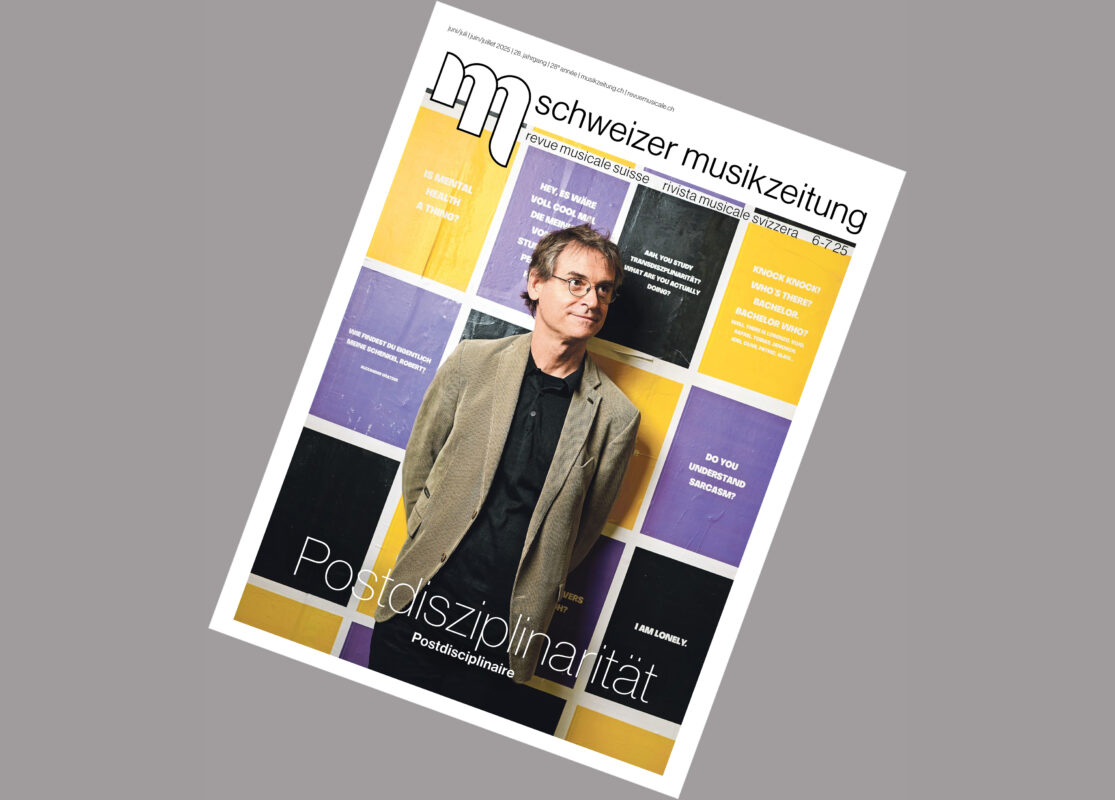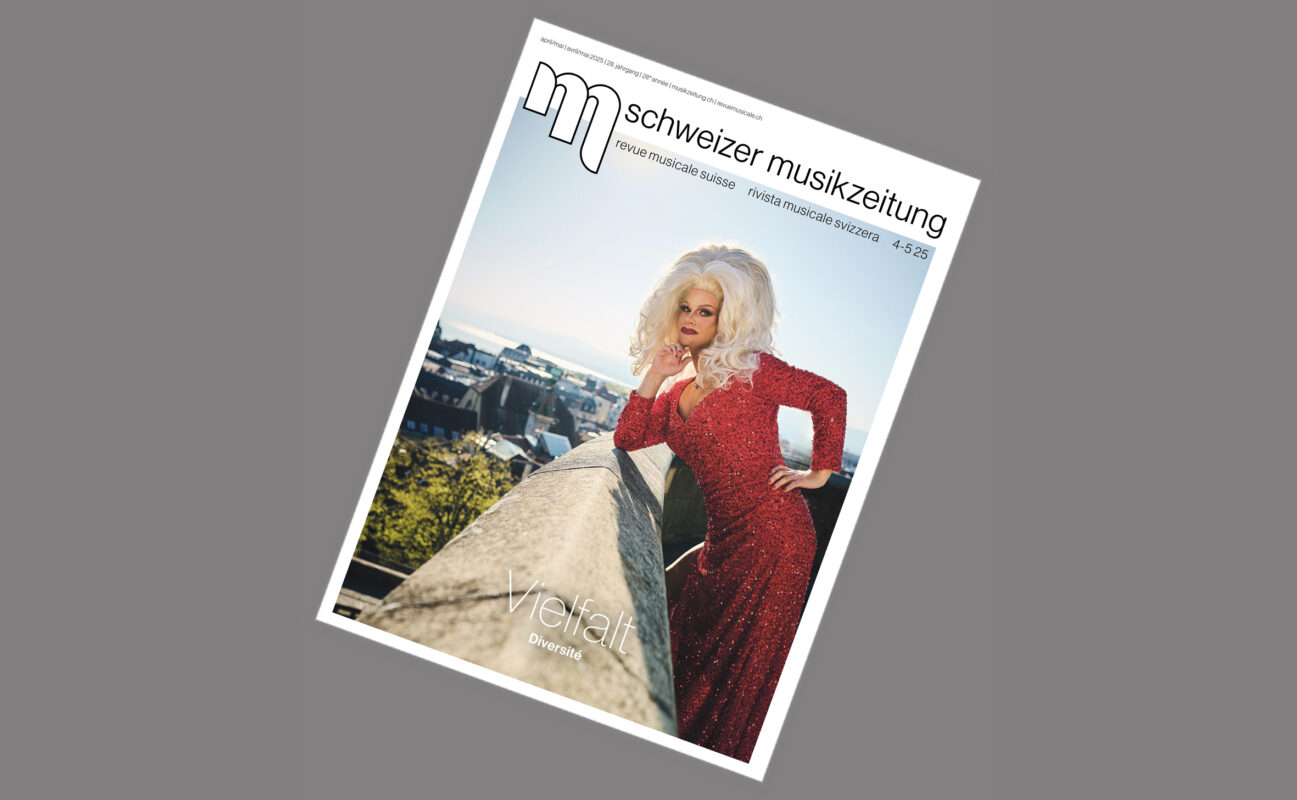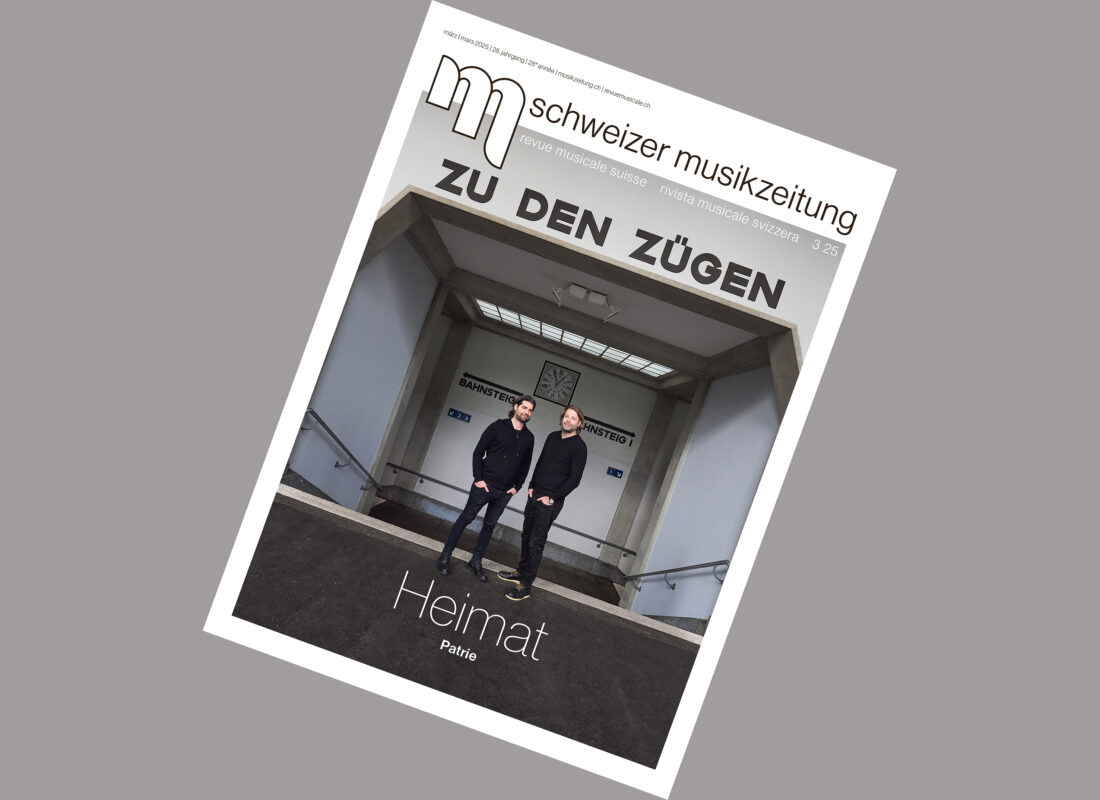Musical activities in the retirement home
Concerts for festivals throughout the year, improvisation courses, recordings, music therapy: there are many occasions to incorporate music into everyday life at the home.


Concerts for festivals throughout the year, improvisation courses, recordings, music therapy: there are many occasions to incorporate music into everyday life at the home.
Older people's interest in music remains extremely lively, and because their needs change over time, it seems to me impossible to get bored when working in a care facility for the elderly. As a music therapist, however, I find it essential to continually renew both the content and the forms. At the Mont-Calme retirement home in Lausanne, the management relied on an animation team from the various artistic disciplines right from the start. There are two of us for the music: drummer Jacques Lambelet and myself as a therapist.
Our ultimate goal is to bring in our passion, to "use" the residents to maintain their personal relationship with music and to get to know new ways of approaching it. Either directly, by playing themselves, or more intellectually, through workshops that introduce them to works, artists or musical styles from all over the world. There are also simple moments of coming together in choir singing, at concerts or festivals. And last but not least, of course, music therapy, which supports the expression of one's own being. However, this is not about the therapeutic moments, but about the musical ones that can be experienced in our home.
A puppet theater
In 2008, we undertook an overarching socio-cultural project: a performance with life-size puppets created in our painting and sewing studio. The writing group wrote the story. The music was to be omnipresent in it and emerge as a joint work from the residents' improvisations. So Jacques Lambelet and I set up easy-to-play instruments in the music studio: Marimbas, balaphones, djembes, bells, drums, tambourines. Then we combed the corridors to find some motivated people to improvise. "But, I can't play" or "I'm too old for that" was what we often heard. In the end, however, we also heard "Well, if you enjoy it" or "I'm interested". And it worked: five to six residents at a time played for an hour and a half without saying a word, and we recorded the whole thing. These hours were characterized by exchanging glances, encouragement, delight and finding or rediscovering musical skills. Everyone left the room full of energy at the end, Mr. S. was so inspired by the rhythms that the wheelchair proved to be superfluous for the return journey. The result was also amazing: completely different musical moods from which we were able to select excerpts to accompany the various scenes.
On this occasion, I also realized what our work in the home is actually about: it's not about stimulating people in any way, but about strengthening them, being together with them and having shared experiences, from person to person.
A CD and a festival
Another musical highlight followed in 2011: our first own CD. It was the culmination of a lengthy production process. Week after week, we recorded residents and employees with their performances and had to overcome technical and organizational difficulties. For some, it was an incentive to start playing again, for others to try something completely new. What pride it was to present the CD at the end ...
For 48 hours in 2012, our home was all about music. Our aim was to present the home to visitors as a place full of musical life. Performances took place everywhere in the appropriate room: Body performances in one of our baths, Tibetan singing bowls resounded in the wellbeing area, gospel in the devotional room, a painting workshop and, of course, music in the painting studio. A highlight for me was when the music-making staff woke up the residents in tails and evening dress - with music, of course: percussion, singing, accordion, cello. The reactions were surprisingly varied: smiles, laughter, tears, indifference, attentive listening, humming along.
From my experience, I can say that the positive reactions to such selective musical events also result from the relationships that are built in the more intimate encounters with music, for example in music therapy.








